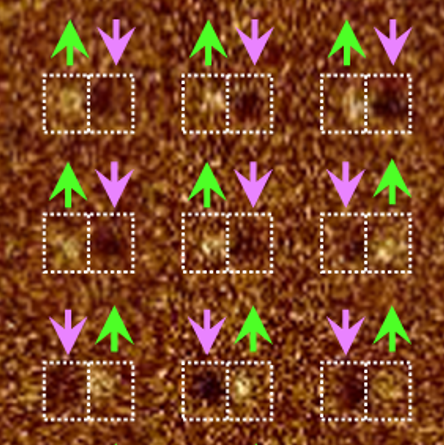Article published on voltage-controlled lateral magnetic coupling
In our recent publication, we introduced reprogrammable chiral coupling, allowing us to switch between parallel and antiparallel orientations of the magnetization in neighboring regions. This is achieved with solid-state ionic gating, where the magnetic anisotropy in narrow gate areas between the regions is altered with an applied voltage.

Magnetic interactions define the coupling strength between adjacent magnetic moments as well as their relative orientation. They are usually given by the choice of materials and their properties, or by the geometry, which is defined with lithography. Here we introduce reprogrammable chiral coupling, allowing us to switch between parallel and antiparallel orientations of the magnetization in neighboring regions. This is achieved with solid-state ionic gating, where the magnetic anisotropy in narrow gate areas between the regions is altered with an applied voltage. With this, we voltage-control phase transitions in artificial spin ices or program complex Ising networks for computation purposes.
This work was carried out in collaboration with Laboratory for Magnetism and Interface Physics at ETH Zurich and with the State Key Laboratory of Artificial Microstructure and Mesoscopic Physics at Peking University.
Electrically programmable magnetic coupling in an Ising network exploiting solid-state ionic gating
C. Yun, Z. Liang, A. Hrabec, Z. Liu, M. Huang, L. Wang, Y. Xiao, Y. Fang, W. Li, W. Yang, Y. Hou, J. Yang, L. J. Heyderman, P. Gambardella, Z. Luo
external page Nature Communications, 14, 6367 (2023)